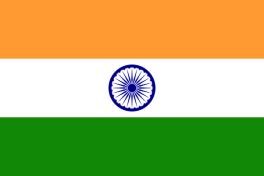Donate to Support Supercluster
Your support makes the Astronaut Database and Launch Tracker possible, and keeps all Supercluster content free.
SUPPORTSupercluster on Patreon
Your support makes the Astronaut Database and Launch Tracker possible, and keeps all Supercluster content free.
SUPPORTThis goes
to space
DS-EO & Others
This mission will take three Singaporean satellites to Low Earth Orbit: 365 kg DS-EO, 155 kg NeuSAR, and 2.8 kg Scoob-1 .
DS-EO carries an Electro-Optic, multi-spectral payload that will provide full-color images for land classification. With an imaging capability of 0.5 m, it will serve Humanitarian Assistance and Disaster Relief needs. The satellite, operated by the Defense Science and Technology Agency of Singapore and ST Engineering, will be injected into orbit with a semi-major axis of 6948.137 + 20 km at an altitude of 570km measured from the equator.
NeuSAR, built by Starec Initiative, is Singapore's first small commercial satellite carrying a SAR payload, which is capable of providing images day and night, under all weather conditions.
SCOOB-I is the first satellite in the Student Satellite Series, a hands-on student training program from the Satellite Research Centre at Singapore's NTU School of Electrical and Electronic Engineering.
Courtesy of ISRO
Image Credit: DSTA
On this
rocket
Polar Satellite Launch Vehicle - Core Alone
The Polar Satellite Launch Vehicle - Core Alone (PSLV-CA) is an expendable rocket built and operated by the ISRO.
Stats
Height: 44 m (144 ft)
Diameter: 2.8 m (9 ft 2 in)
Mass: 230,000 kg (510,000 lb)
Stages: 4
The rocket provides domestic launch services for India and is also available for other international missions.
The PSLV-CA costs approximately $18 million USD per mission -- making it quite attractive to companies looking for reliable and low-cost access to space.
Standing 44 m (144 feet) tall, the PSLV-CA is a 4 stage solid and liquid fueled rocket that flew for the first time on April 23, 2007.
Image: ISRO
From this
launch site
Second Launch Pad - Satish Dhawan Space Centre
The Second Launch Pad was built between March 1999 and December 2003.
It was used for the first time on May 5th, 2005 and can launch three different types of rockets: the Polar Satellite Launch Vehicle (PSLV), the Geostationary Satellite Launch Vehicle (GSLV) Mk-II, and the GSLV Mk-III.
The pad has launched several important missions. One of them was Chandrayaan-1, India's first Moon mission and the flight that discovered water on the lunar surface.
The pad is also the one India plans to use for its upcoming human space program.
Satish Dhawan Space Centre
The Satish Dhawan Space Centre, or Sriharikota Range, is a rocket launch center operated by the Indian Space Research Organisation (ISRO).
It is located in Sriharikota in Andhra Pradesh and was chosen for its remote location. The center launched its first suborbital mission in 1971 and first orbital flight on August 10th, 1979.
The spaceport received its current name in 2005 when it was named in honor of Satish Dhawan, the former head of the ISRO.
The facility has two launch pads and will be the base of India's upcoming human spaceflight program.
Image credit: ISRO
Here's where to view DS-EO & Others
Viewing Sites
- Satish Dhawan Launch Viewing Gallery
GET THE SUPERCLUSTER APP
THE SUPERCLUSTER PODCAST
A podcast exploring the amazing milestones that changed space history, the wildest ideas that drive our future, and every development in this new Golden Age of Space.
Donate to support
Your support makes the Astronaut Database and Launch Tracker possible, and keeps all Supercluster content free.
SupportCOPYRIGHT 2021 SUPERCLUSTER LLC


